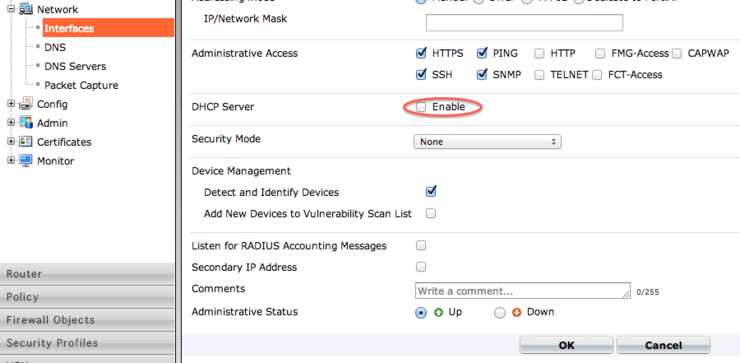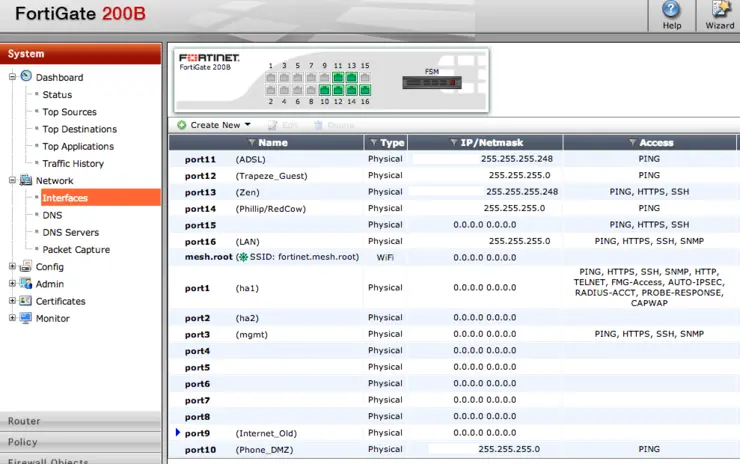Fortigate units (the big ones at least) come configured in what is called “switch mode” meaning it groups a number of interfaces together and makes them act as a switch, serves DHCP over these interfaces, etc.
Most companies don’t like to use this - instead if we want to up our throughput for a given zone we’d create an 802.3ad aggregate link out of 2 or more of the interfaces.
Disabling switch mode isn’t as straight forward as putting the one command in, there are two factors you need to consider:
- Are you serving DHCP over this switch interface?
- Have you got any policies relating to this interface?
If the answer is “yes” to either of these you need to do the following or you will see one of Interface switch is in use or Interface internal is in use or Entry is used later on:
Delete the DHCP server relating to it (either in the GUI as below):

Or you can do it in the CLI:
fw-a # config sys dhcp server
fw-a (server) # show <look at list and find the entry number relating to your interface>
fw-a (server) # delete [entry number here]
fw-a (server) # end
Next you need to delete all policies relating to the interface again, this can be done in the GUI via Policy -> Policy -> Policy and delete all policies associated with that interface. Again, it can be done with the CLI:
fw-a # config firewall policy
fw-a (policy) # show <look at list and find the entry number(s) relating to your interface>
fw-a (policy) # delete [entry number here]
fw-a (policy) # end
Once all the switch mode interface’s related objects are deleted then we can change the global mode from switch to interface via CLI:
fw-a # config sys global
fw-a (global) # set internal-switch-mode interface
fw-a (global) # end
Changing switch mode will reboot the system!
Do you want to continue? (y/n) y
The box will reboot and you’ll have a host of new interfaces to use as you like.
N.B: Some boxes are awkward and will require you to deleted the virtual hardware/software switch that is created it you still can’t see the individual IFs run the following commands:
configure system virtual-switch
delete {interface name e.g. lan, internal}
If you are still having difficulty you can run the following to find any remaining related entries to the interface:
diagnose sys checkused sys.interface.name {interface name e.g. lan, internal}
This command will output any entries that relate to this object and might stop it from being removed.
Why not follow @mylesagray on Twitter ↗ for more like this!
